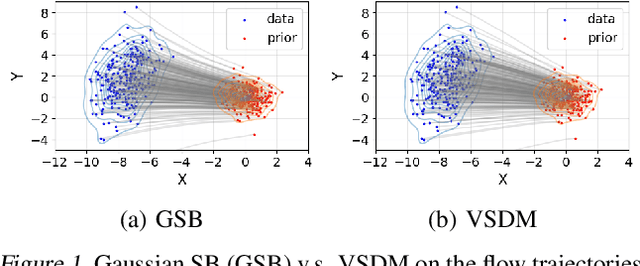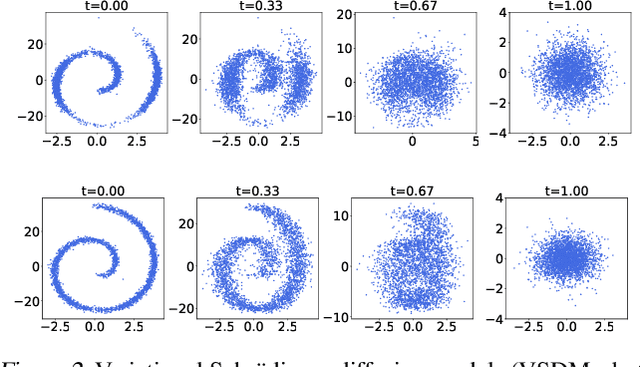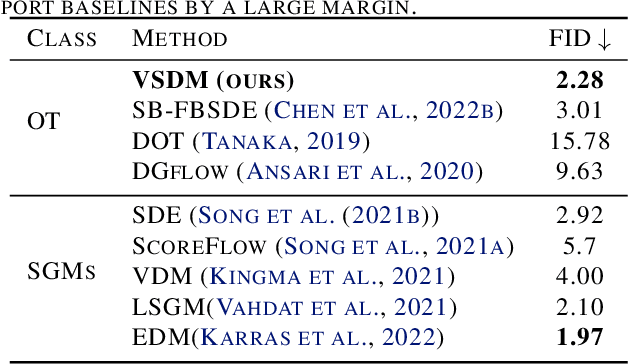Yuriy Nevmyvaka
Multi-modal Time Series Analysis: A Tutorial and Survey
Mar 17, 2025Abstract:Multi-modal time series analysis has recently emerged as a prominent research area in data mining, driven by the increasing availability of diverse data modalities, such as text, images, and structured tabular data from real-world sources. However, effective analysis of multi-modal time series is hindered by data heterogeneity, modality gap, misalignment, and inherent noise. Recent advancements in multi-modal time series methods have exploited the multi-modal context via cross-modal interactions based on deep learning methods, significantly enhancing various downstream tasks. In this tutorial and survey, we present a systematic and up-to-date overview of multi-modal time series datasets and methods. We first state the existing challenges of multi-modal time series analysis and our motivations, with a brief introduction of preliminaries. Then, we summarize the general pipeline and categorize existing methods through a unified cross-modal interaction framework encompassing fusion, alignment, and transference at different levels (\textit{i.e.}, input, intermediate, output), where key concepts and ideas are highlighted. We also discuss the real-world applications of multi-modal analysis for both standard and spatial time series, tailored to general and specific domains. Finally, we discuss future research directions to help practitioners explore and exploit multi-modal time series. The up-to-date resources are provided in the GitHub repository: https://github.com/UConn-DSIS/Multi-modal-Time-Series-Analysis
Privacy Amplification by Structured Subsampling for Deep Differentially Private Time Series Forecasting
Feb 04, 2025Abstract:Many forms of sensitive data, such as web traffic, mobility data, or hospital occupancy, are inherently sequential. The standard method for training machine learning models while ensuring privacy for units of sensitive information, such as individual hospital visits, is differentially private stochastic gradient descent (DP-SGD). However, we observe in this work that the formal guarantees of DP-SGD are incompatible with timeseries-specific tasks like forecasting, since they rely on the privacy amplification attained by training on small, unstructured batches sampled from an unstructured dataset. In contrast, batches for forecasting are generated by (1) sampling sequentially structured time series from a dataset, (2) sampling contiguous subsequences from these series, and (3) partitioning them into context and ground-truth forecast windows. We theoretically analyze the privacy amplification attained by this structured subsampling to enable the training of forecasting models with sound and tight event- and user-level privacy guarantees. Towards more private models, we additionally prove how data augmentation amplifies privacy in self-supervised training of sequence models. Our empirical evaluation demonstrates that amplification by structured subsampling enables the training of forecasting models with strong formal privacy guarantees.
Variational Schrödinger Momentum Diffusion
Jan 28, 2025



Abstract:The momentum Schr\"odinger Bridge (mSB) has emerged as a leading method for accelerating generative diffusion processes and reducing transport costs. However, the lack of simulation-free properties inevitably results in high training costs and affects scalability. To obtain a trade-off between transport properties and scalability, we introduce variational Schr\"odinger momentum diffusion (VSMD), which employs linearized forward score functions (variational scores) to eliminate the dependence on simulated forward trajectories. Our approach leverages a multivariate diffusion process with adaptively transport-optimized variational scores. Additionally, we apply a critical-damping transform to stabilize training by removing the need for score estimations for both velocity and samples. Theoretically, we prove the convergence of samples generated with optimal variational scores and momentum diffusion. Empirical results demonstrate that VSMD efficiently generates anisotropic shapes while maintaining transport efficacy, outperforming overdamped alternatives, and avoiding complex denoising processes. Our approach also scales effectively to real-world data, achieving competitive results in time series and image generation.
Reweighting Improves Conditional Risk Bounds
Jan 04, 2025


Abstract:In this work, we study the weighted empirical risk minimization (weighted ERM) schema, in which an additional data-dependent weight function is incorporated when the empirical risk function is being minimized. We show that under a general ``balanceable" Bernstein condition, one can design a weighted ERM estimator to achieve superior performance in certain sub-regions over the one obtained from standard ERM, and the superiority manifests itself through a data-dependent constant term in the error bound. These sub-regions correspond to large-margin ones in classification settings and low-variance ones in heteroscedastic regression settings, respectively. Our findings are supported by evidence from synthetic data experiments.
Prediction-Enhanced Monte Carlo: A Machine Learning View on Control Variate
Dec 15, 2024



Abstract:Despite being an essential tool across engineering and finance, Monte Carlo simulation can be computationally intensive, especially in large-scale, path-dependent problems that hinder straightforward parallelization. A natural alternative is to replace simulation with machine learning or surrogate prediction, though this introduces challenges in understanding the resulting errors.We introduce a Prediction-Enhanced Monte Carlo (PEMC) framework where we leverage machine learning prediction as control variates, thus maintaining unbiased evaluations instead of the direct use of ML predictors. Traditional control variate methods require knowledge of means and focus on per-sample variance reduction. In contrast, PEMC aims at overall cost-aware variance reduction, eliminating the need for mean knowledge. PEMC leverages pre-trained neural architectures to construct effective control variates and replaces computationally expensive sample-path generation with efficient neural network evaluations. This allows PEMC to address scenarios where no good control variates are known. We showcase the efficacy of PEMC through two production-grade exotic option-pricing problems: swaption pricing in HJM model and the variance swap pricing in a stochastic local volatility model.
Variational Schrödinger Diffusion Models
May 08, 2024



Abstract:Schr\"odinger bridge (SB) has emerged as the go-to method for optimizing transportation plans in diffusion models. However, SB requires estimating the intractable forward score functions, inevitably resulting in the costly implicit training loss based on simulated trajectories. To improve the scalability while preserving efficient transportation plans, we leverage variational inference to linearize the forward score functions (variational scores) of SB and restore simulation-free properties in training backward scores. We propose the variational Schr\"odinger diffusion model (VSDM), where the forward process is a multivariate diffusion and the variational scores are adaptively optimized for efficient transport. Theoretically, we use stochastic approximation to prove the convergence of the variational scores and show the convergence of the adaptively generated samples based on the optimal variational scores. Empirically, we test the algorithm in simulated examples and observe that VSDM is efficient in generations of anisotropic shapes and yields straighter sample trajectories compared to the single-variate diffusion. We also verify the scalability of the algorithm in real-world data and achieve competitive unconditional generation performance in CIFAR10 and conditional generation in time series modeling. Notably, VSDM no longer depends on warm-up initializations and has become tuning-friendly in training large-scale experiments.
Deep Generative Sampling in the Dual Divergence Space: A Data-efficient & Interpretative Approach for Generative AI
Apr 10, 2024



Abstract:Building on the remarkable achievements in generative sampling of natural images, we propose an innovative challenge, potentially overly ambitious, which involves generating samples of entire multivariate time series that resemble images. However, the statistical challenge lies in the small sample size, sometimes consisting of a few hundred subjects. This issue is especially problematic for deep generative models that follow the conventional approach of generating samples from a canonical distribution and then decoding or denoising them to match the true data distribution. In contrast, our method is grounded in information theory and aims to implicitly characterize the distribution of images, particularly the (global and local) dependency structure between pixels. We achieve this by empirically estimating its KL-divergence in the dual form with respect to the respective marginal distribution. This enables us to perform generative sampling directly in the optimized 1-D dual divergence space. Specifically, in the dual space, training samples representing the data distribution are embedded in the form of various clusters between two end points. In theory, any sample embedded between those two end points is in-distribution w.r.t. the data distribution. Our key idea for generating novel samples of images is to interpolate between the clusters via a walk as per gradients of the dual function w.r.t. the data dimensions. In addition to the data efficiency gained from direct sampling, we propose an algorithm that offers a significant reduction in sample complexity for estimating the divergence of the data distribution with respect to the marginal distribution. We provide strong theoretical guarantees along with an extensive empirical evaluation using many real-world datasets from diverse domains, establishing the superiority of our approach w.r.t. state-of-the-art deep learning methods.
$\textbf{S}^2$IP-LLM: Semantic Space Informed Prompt Learning with LLM for Time Series Forecasting
Mar 09, 2024



Abstract:Recently, there has been a growing interest in leveraging pre-trained large language models (LLMs) for various time series applications. However, the semantic space of LLMs, established through the pre-training, is still underexplored and may help yield more distinctive and informative representations to facilitate time series forecasting. To this end, we propose Semantic Space Informed Prompt learning with LLM ($S^2$IP-LLM) to align the pre-trained semantic space with time series embeddings space and perform time series forecasting based on learned prompts from the joint space. We first design a tokenization module tailored for cross-modality alignment, which explicitly concatenates patches of decomposed time series components to create embeddings that effectively encode the temporal dynamics. Next, we leverage the pre-trained word token embeddings to derive semantic anchors and align selected anchors with time series embeddings by maximizing the cosine similarity in the joint space. This way, $S^2$IP-LLM can retrieve relevant semantic anchors as prompts to provide strong indicators (context) for time series that exhibit different temporal dynamics. With thorough empirical studies on multiple benchmark datasets, we demonstrate that the proposed $S^2$IP-LLM can achieve superior forecasting performance over state-of-the-art baselines. Furthermore, our ablation studies and visualizations verify the necessity of prompt learning informed by semantic space.
Structural Knowledge Informed Continual Multivariate Time Series Forecasting
Feb 20, 2024



Abstract:Recent studies in multivariate time series (MTS) forecasting reveal that explicitly modeling the hidden dependencies among different time series can yield promising forecasting performance and reliable explanations. However, modeling variable dependencies remains underexplored when MTS is continuously accumulated under different regimes (stages). Due to the potential distribution and dependency disparities, the underlying model may encounter the catastrophic forgetting problem, i.e., it is challenging to memorize and infer different types of variable dependencies across different regimes while maintaining forecasting performance. To address this issue, we propose a novel Structural Knowledge Informed Continual Learning (SKI-CL) framework to perform MTS forecasting within a continual learning paradigm, which leverages structural knowledge to steer the forecasting model toward identifying and adapting to different regimes, and selects representative MTS samples from each regime for memory replay. Specifically, we develop a forecasting model based on graph structure learning, where a consistency regularization scheme is imposed between the learned variable dependencies and the structural knowledge while optimizing the forecasting objective over the MTS data. As such, MTS representations learned in each regime are associated with distinct structural knowledge, which helps the model memorize a variety of conceivable scenarios and results in accurate forecasts in the continual learning context. Meanwhile, we develop a representation-matching memory replay scheme that maximizes the temporal coverage of MTS data to efficiently preserve the underlying temporal dynamics and dependency structures of each regime. Thorough empirical studies on synthetic and real-world benchmarks validate SKI-CL's efficacy and advantages over the state-of-the-art for continual MTS forecasting tasks.
Empowering Time Series Analysis with Large Language Models: A Survey
Feb 05, 2024Abstract:Recently, remarkable progress has been made over large language models (LLMs), demonstrating their unprecedented capability in varieties of natural language tasks. However, completely training a large general-purpose model from the scratch is challenging for time series analysis, due to the large volumes and varieties of time series data, as well as the non-stationarity that leads to concept drift impeding continuous model adaptation and re-training. Recent advances have shown that pre-trained LLMs can be exploited to capture complex dependencies in time series data and facilitate various applications. In this survey, we provide a systematic overview of existing methods that leverage LLMs for time series analysis. Specifically, we first state the challenges and motivations of applying language models in the context of time series as well as brief preliminaries of LLMs. Next, we summarize the general pipeline for LLM-based time series analysis, categorize existing methods into different groups (i.e., direct query, tokenization, prompt design, fine-tune, and model integration), and highlight the key ideas within each group. We also discuss the applications of LLMs for both general and spatial-temporal time series data, tailored to specific domains. Finally, we thoroughly discuss future research opportunities to empower time series analysis with LLMs.
 Add to Chrome
Add to Chrome Add to Firefox
Add to Firefox Add to Edge
Add to Edge